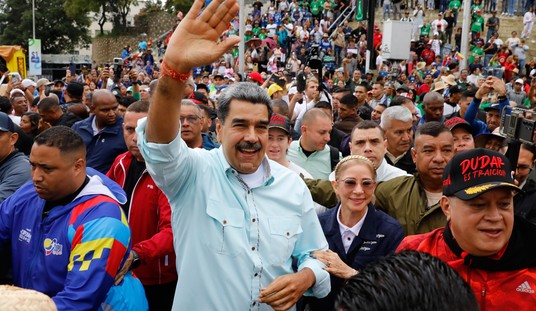This is something I’ve brought up before. The UAW is not only hoping to win a big contract for its members, it’s also hoping word of the big contract will induce other workers to unionize, thereby making the UAW bigger. NBC News spoke to non-union workers on both sides of the issue. Some were interested in unionizing, others not so much.
James Bryant, a vehicle inspector at a Nissan plant in Canton, Mississippi, said he and his colleagues discuss the latest strike developments before work and during their breaks, hoping enough teammates will become galvanized to unionize their own facility.
“I think they’re doing the right thing,” Bryant, 51, said of the strikers. “If they don’t, these companies are just going to keep doing whatever it is they want to do.”…
But [Falid] Vongasa, 32, said he has great job stability at Honda, especially after working in restaurants. He said he was promoted almost a year ago from the assembly line to an office role with a significant pay bump.
“If you’re familiar with a restaurant background, you don’t get weekends off, you don’t get medical insurance most of the time, 401(k) and all that,” he said. “I’m grateful for all that, and I’m not really expecting any more,” he said, adding that he supports the UAW strikers nonetheless.
Another Honda worker recalled advice his father had given him about what unionization would do to the workplace. “I remember him telling me it’s kind of like you’re the little guy that’s in the arena with two pit vipers, and you’re basically trying to high-tail it out of there without getting bitten or killed,” he said.
Of course all of this assumes that the UAW comes out of this with a huge contract. Former Obama car czar Steve Rattner has argued that the UAW might be asking for more than the car companies can realistically give. And that means they may need to climb down from some of their demands. Rattner gave an interview to the New Yorker which was published today.
Look, these are difficult balancing acts, and the yin and the yang of this is that there’s some degree of trade-off between wages and jobs. We can certainly pay the workers more, but you’re going to then see more jobs going to non-unionized manufacturers in the South or to Mexico or to other parts of the world. It’s a tough situation. There is a fundamental difference between the service-sector industries, which today comprise the vast, vast majority of our jobs, and manufacturing jobs or other jobs where there can be global competition. You have to think about the market for workers in what we call a tradable industry as being a global market. If wages in one place are too high, then workers in other places with more modest wages will end up getting more work and vice versa. That’s very fundamentally different from something like UPS drivers or L.A. hotel workers or whatever. Those jobs really can’t move, and so there’s more leeway to pay those people more. It comes out in a bit more inflation, a bit lower profits, but that’s all fine. There is not nearly the same trade-off as with manufacturing.
A good portion, in my opinion, of the reason wages in the auto sector in general and in manufacturing in particular have been flat to declining on a real basis for a while now is because of this phenomenon of global competition. The only way U.S. companies in many cases have been competitive is by holding down wages. It’s a very different picture if you look at what’s happened to wages in the manufacturing sectors versus wages in the service sector…
Look, on the core issue of pay, the gap has been narrowing in the course of these negotiations. We’re talking about a four-year contract. The last number I saw from the companies was something like twenty per cent. The unions had started out at forty per cent, then went to thirty-five per cent. I think I saw something that suggests that they might now be at thirty per cent. That should be a solvable gap. That’s just splitting differences until you get to a place that both sides can accept. And I think a lot of these asks are aspirational rather than what they really expect to get. Where the asks get very hard to see is around the idea of forty hours of pay for thirty-two hours of work. Another way that they describe this is a personal day off per week for every worker.
Going back to defined-benefit pension plans is a wonderful idea. But that’s just not where reality is today. There’s no company I know of that’s instituting a new defined-benefit pension plan…
I’ve done deals for forty years and whether it’s a corporate deal or a labor negotiation, deals are deals. And yes, both sides will always come to the table, either offering less than they expect to have to give or asking for more than they expect to get. But what the U.A.W. came in with this time is really just so far from the middle of the fairway that it probably is not fully productive for them to have done it and made it so public, too.
Because the UAW did make all of this so public we’re going to be able to compare what they asked for and what they got. There’s going to be a pretty big gap between the two at the end of the day.
Ford had submitted another offer to the UAW as of today. The UAW has responded to the last offer from GM. Presumably the strike will continue with Shawn Fain announcing more plants the UAW is targeting this Friday. The battle will go on, possibly for a few more months, until both sides decide they’ve had enough of making each other go broke.







Join the conversation as a VIP Member